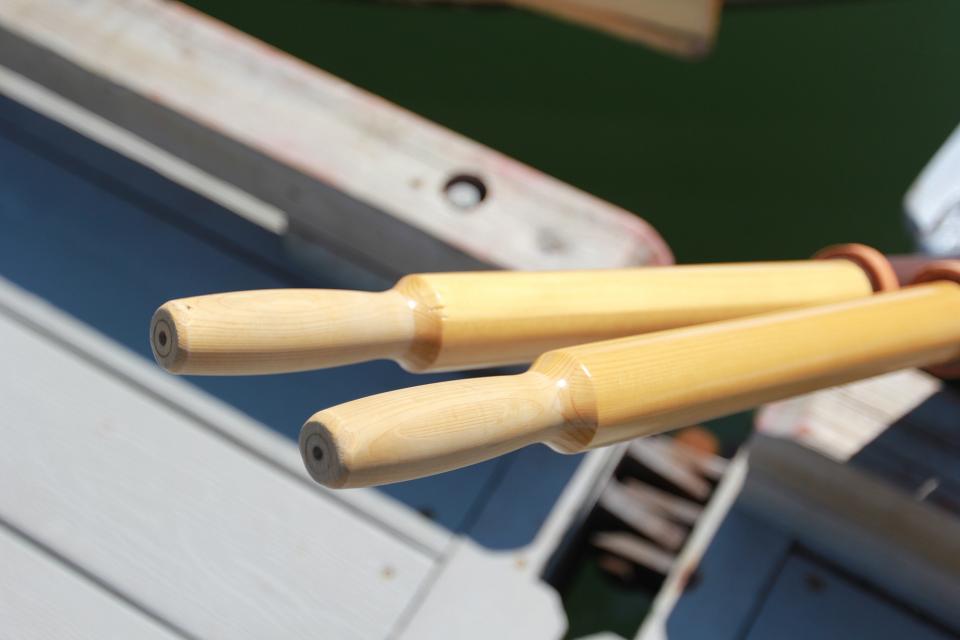Why Shaw and Tenney Oar Handles Remain Slip-Free and Comfortable
When it comes to the art of rowing and paddling, every detail matters. From the sleek design of the boat to the efficiency of the strokes, every component plays a vital role in the overall experience. One often-overlooked yet crucial aspect is the oar handle. Here at Shaw and Tenney, where we have been making oars since 1858, we understand the significance of a well-designed oar handle. That's why they have chosen to keep our oar handles unvarnished, a decision rooted in the pursuit of slip-free, comfortable, and blister-free rowing.
1. Banishing Slipperiness with Unvarnished Handles
Imagine being out on the water, the sun glistening on the surface, and you're ready to dive into a rhythm with your oars. Suddenly, the varnished handles become slippery, making it challenging to maintain control. This scenario is something every rower dreads, as it can compromise both performance and safety.

Shaw and Tenney recognizes this challenge and addresses it head-on. By leaving our oar handles unvarnished, we provide a solution that keeps slipperiness at bay. The natural texture of wood, when unvarnished, offers a reliable grip even when wet. This ensures that rowers can focus on their strokes and technique without worrying about their hands losing their grip at a critical moment.
2. The Comfort Factor: Embracing the Natural Feel
There's a distinct tactile satisfaction that comes from holding a piece of unvarnished wood. The sensation of the grain under your fingers creates a connection between you, your oar, and the water. This natural feel is something that Shaw and Tenney prioritize.

Unvarnished oar handles from Shaw and Tenney offer rowers a direct connection to their equipment and the elements. This tactile feedback is invaluable for making precise adjustments in stroke length, power output, and overall technique. When every nuance of your movement can be felt through the handle, you're able to fine-tune your performance for optimal results.
3. Bidding Farewell to Blisters with Unvarnished Handles
Varnished handles might look polished, but they come with a potential downside: blistering. Over time, varnish can wear down and develop chips or cracks. These imperfections might seem minor, but they can cause friction against the rower's hand, leading to blisters and discomfort. Such issues are the last things any rower wants to contend with during a serene day on the water.
By opting for unvarnished handles, we greatly reduce the risk of blistering. The natural wood surface, when maintained properly, retains its smoothness and integrity. This means that rowers can enjoy a comfortable grip without worrying about the development of painful blisters.

Our decision at Shaw and Tenney to keep our oar handles unvarnished isn't just about aesthetics – it's a conscious choice that prioritizes functionality, comfort, and safety. By banishing slipperiness, embracing the natural feel, and avoiding blistering, unvarnished handles provide rowers with an unparalleled experience on the water. So, the next time you're out rowing with a pair of Shaw and Tenney oars, remember that the unvarnished handles are there to enhance your journey, stroke by stroke.

